Musings
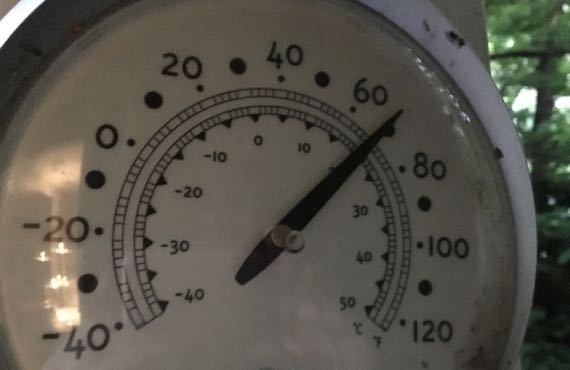
These rarities are situational. Temps in the 60s, even the high 60s are unusual these days. Sooooo glad to have it to walk this morning. Temps will rise into the 90s the rest of the week (summer?), so overnight likely won’t get this cool again for a while.
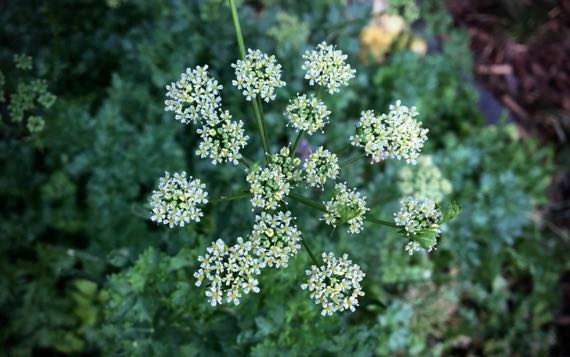
When parsley blooms, this is what it looks like. Pretty, no? Usually it’s picked before this stage, or most of us don’t even bother to grow it, as it bolts so quickly.
Posted at 7:10 PM |
Comments Off on Rarities

I came around a corner on my neighborhood wander and was eyeball to…whatever with a giant orange roll of tubing. The Guru says this will carry Giggle (not its real name) fiber. Wonder when they’ll turn it on.
Posted at 8:30 PM |
Comments Off on Progress is orange
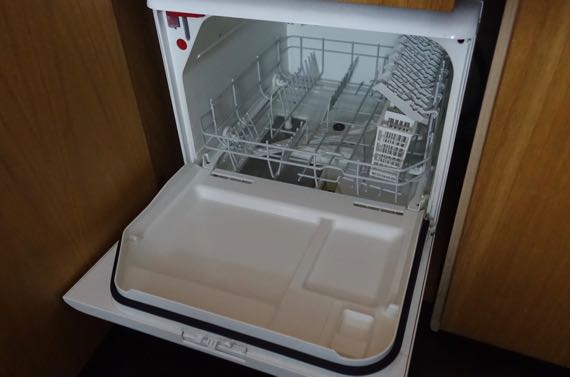
This is the smallest dishwasher I remember seeing (largest interior dimension maybe 1ft). We did not use it.
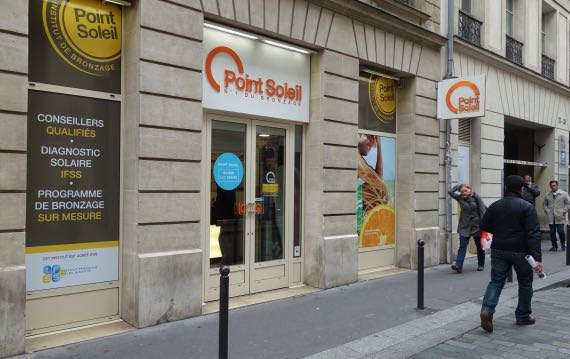
I learned another new French word: Bronzage. It does not mean Bronze Age, but bronzed/bronzing, as in changing the color of your skin (as in tanning place).

We took the bus and not the train to the airport, which we had not done before. Thus, we saw neighborhoods we’d only tunneled beneath before. Gambling anyone?

We had a pretty darned good view of Paris as we climbed away from the earth. That’s the Eiffel Tower “above” and back from the oblique white “doughnut” stadium in the right half of the photo. You can see the Seine next to it….

Wonder of wonders, the flight was not full (not at all), and the flight attendants were a bit giddy (or maybe not), offering two bottles of bourbon when I asked for liquor. Why not?
We are home safely and all is well. What’s next, you may ask…laundry, I’d say, being prosaic…but not until tomorrow….
Posted at 9:16 PM |
1 Comment »
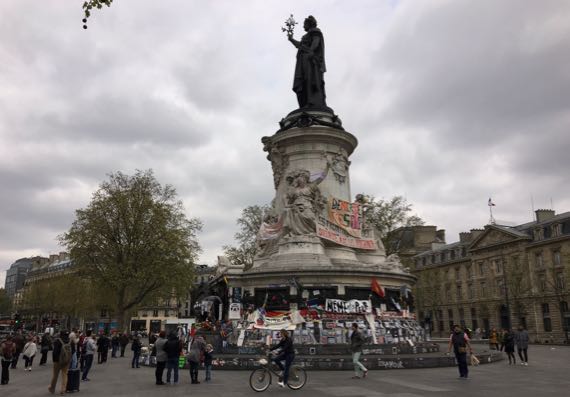
Meet Marianne. She’s the personification of the Republic of France, and the visual anchor of Paris’s Place de la République. In particular, she represents the dissolution of the monarchy and the installation of the republic. Power to the people (more or less). A female figure representing liberty goes back to the later 1700s, and became a widely used icon with the 1789 storming of the Bastille, a prison and symbol of royal authority in central Paris.
This is not far from the neighborhood of the blown-up nightclub, etc., and it has been and continues to be a place of political statements and demonstrations.
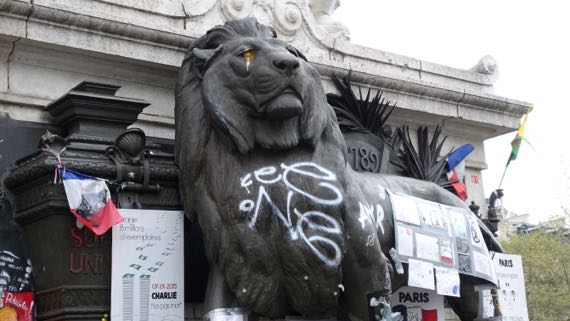
Below Marianne and still above eye level is an oversized lion guarding a ballot-box. More République. Today he had golden tears.
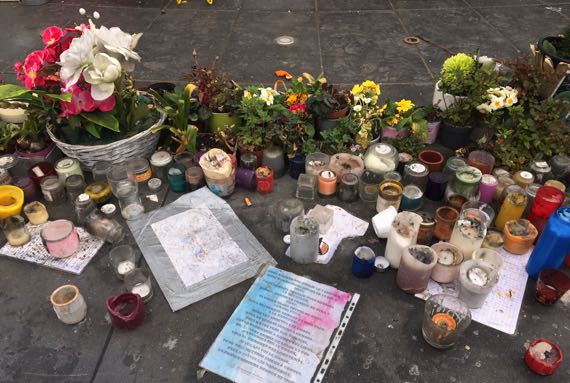
And, on the surface at knee level, many candles and living and plastic/fabric flowers and plants. The topics addressed in word and picture range around the world.
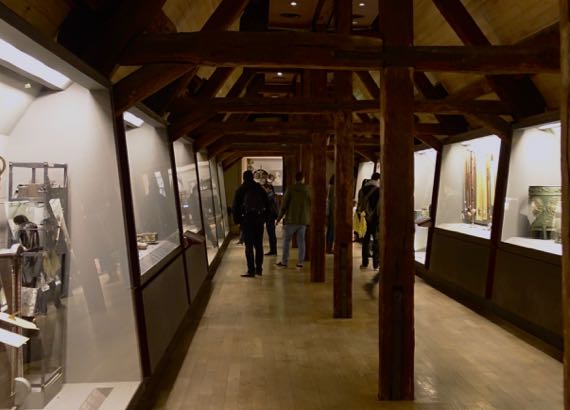
We chose the Musée des Arts et Métiers for today’s brain teaser. It is a museum of industrial design including models of large, complex things (steel furnace), and smaller complicated mechanical items (measuring devices). They sent us to the attic to work our way through the galleries and descend…. Loved the open beams there….
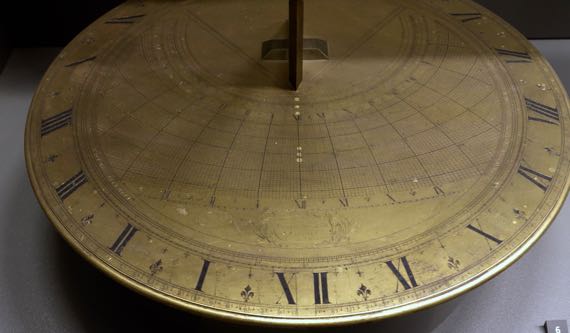
1713 double horizontal sundial.
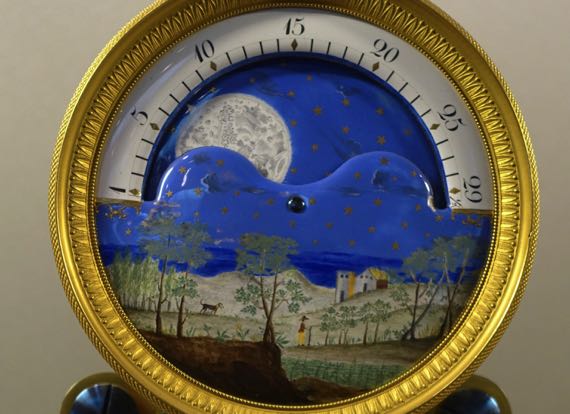
1825 clock, close-up of upper section.
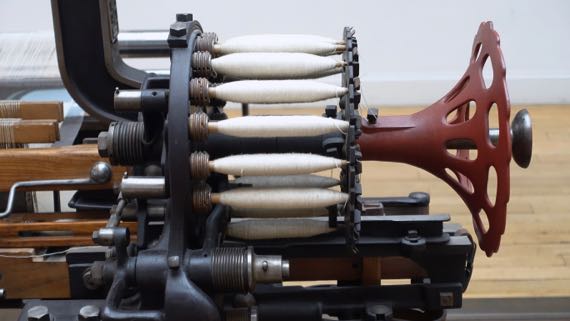
Bobbins on a mechanical weaving machine.
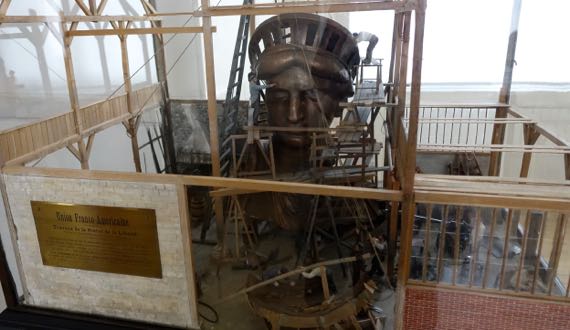
Detailed diorama of the building of the Statue of Liberty in New York harbor.
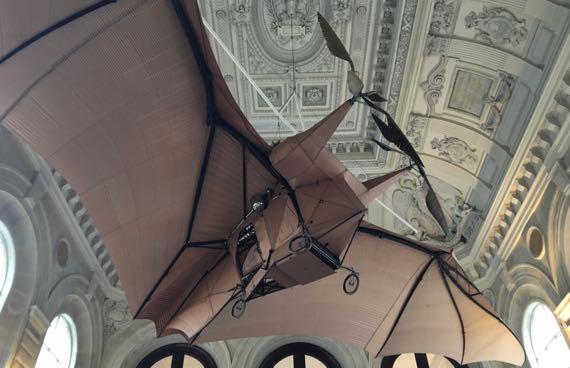
We descended a final staircase, very fancy, marble, wide, and highly decorated. Above us, curators have installed Clément Ader’s Avion/Éole III (1897), with the form modeled on a bat, with feather-shaped propellors. It crashed on its first attempt at flight, and was restored in the 1980s. It does look rather like a modular bat.
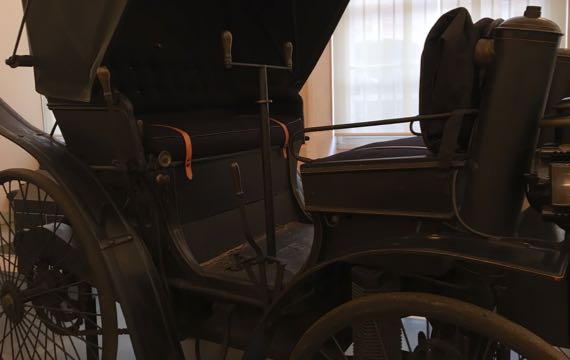
Through a hallway of transportation (this is a Peugeot), we headed for the Chapel of Saint-Martin-des-Champs, a part of what once was the second-most important priory in France, and now within the museum complex. Most of the complex was removed during the Revolution.
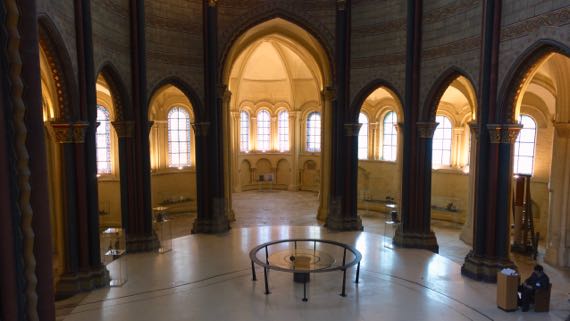
The “front” of the church is empty, very interesting, with a pendulum slowly moving, showing the earth’s revolutions.
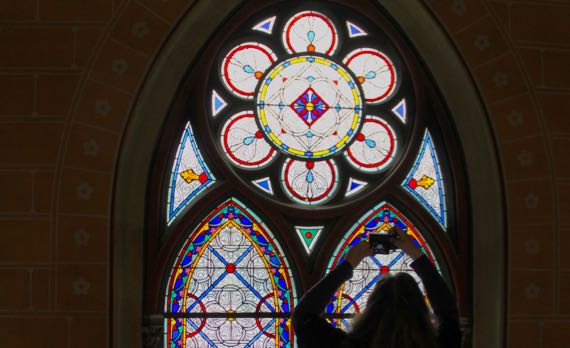
The bulk of the church-space has exhibits, which include a small engineering wonder—stairs and glass exhibit-floors extending four stories (or so) up. While I had some trepidation about the height, I was glad to get so close to the stained glass panels.
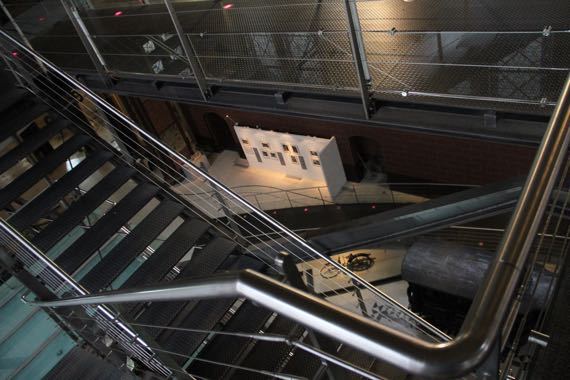
This museum—industrial design from start to finish….
Posted at 12:00 PM |
Comments Off on Industrial design + old church
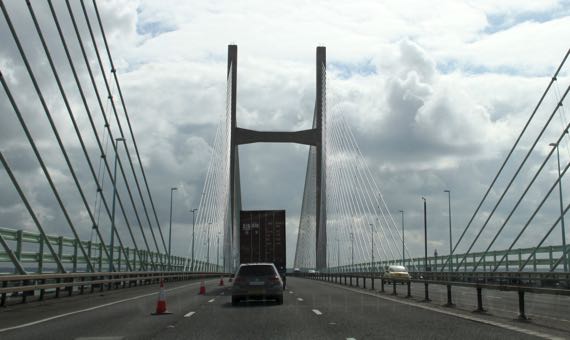
The Severn Bridge we took into Wales opened in 1966. I bet traffic patterns changed immensely, even with the substantial toll. In 1996, the Second Severn Crossing opened; set a bit downstream, it especially carries vehicles flowing to/from southwest Wales, including Cardiff and Swansea. The powers-that-be had the two combined into a single concession to share toll collection and debt repayment. So, we entered Wales on the old bridge (not that old), and left on the new bridge. Bye-bye Wales, we are London-bound with two Roman stops en route.
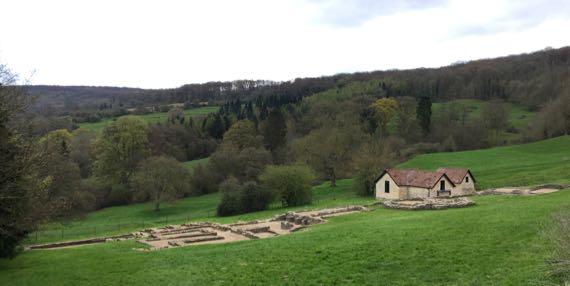
Discovered in 1818, this modest Roman villa commanded the upper area of a smallish drainage, and was built into a hill. Construction began in the AD 250s, and the place was abandoned in the early 400s, when the Roman military pulled out of Britannia. The mosaics are under the roof. The place was ours to visit, quiet except for distant pheasant squawks and generic country sounds.
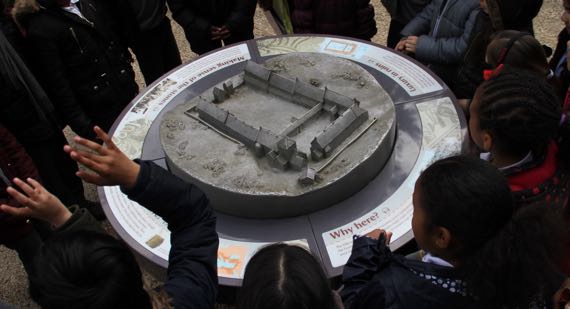
Chedworth Roman Villa, on the other hand, was bustling with docents and vendors, school groups, walkers, and generic tourists. The complex grew over about the same period as the previous villa, and also was set into a hill’s upper slope. This complex became much larger, and much more architecturally elaborate. It ultimately had two bath areas, for example. In this view of the metal maquette, uphill is to the lower right, with the lower, larger courtyard planted into a garden that opens to the upper left (actually east) and views of the valley.
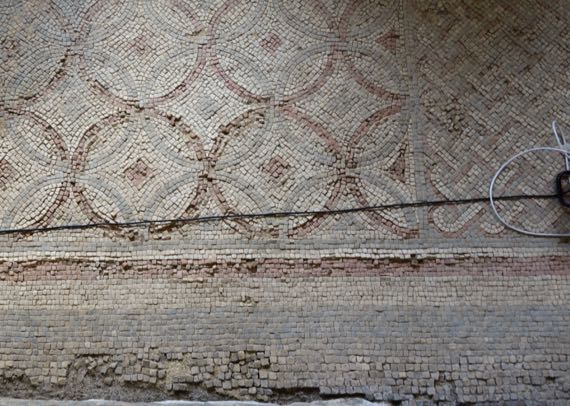
This was among the earliest mosaic floors at Chedworth, along a passageway in the upper “horizontal” bank of rooms that faced the valley (late AD 200s). The earliest construction was up here, three separate buildings that eventually became a single “range” of attached rooms.
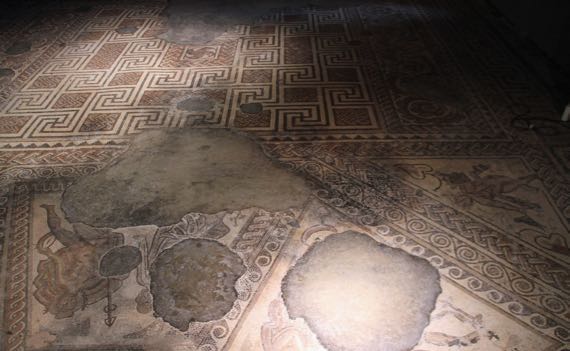
In the early 300s, this elaborate dining room was added, with considerable wealth invested in the floor. This was a typical choice of elite homeowners, as the dining room was the principal location for entertaining (plus the decorative gardens).
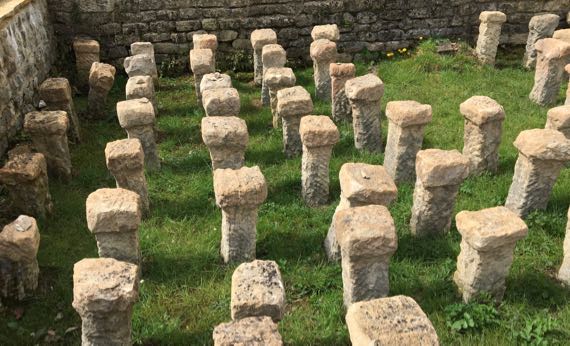
Love the mushroom pillars of the hypocaust floor…. It seems to me that more rooms than in a Rome-area Roman villa had heated floors, I’m assuming because they had the water/firewood to make the heat, and because it was colder than Rome here, and this was how elites made living in the colonies more like life at the imperial center, and thus more Roman.
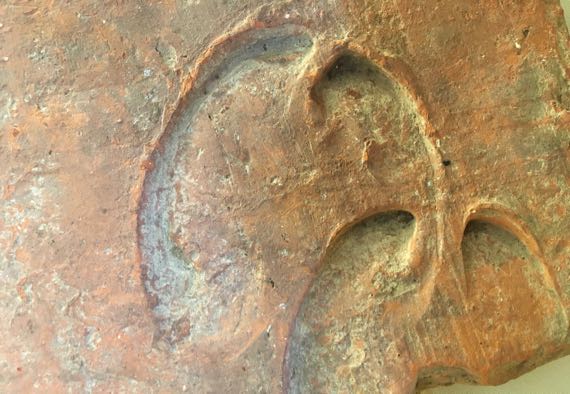
Just one detail from the museum, from the display of impressions in roof tiles. The tiles were made locally, but probably not on the villa property. These are ox-hoof impressions. Other displayed examples were dog, cat, human fingers….
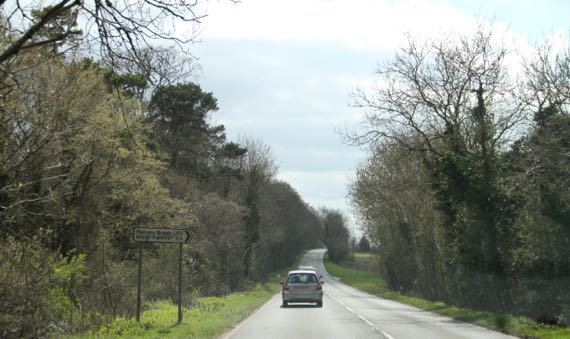
Within ten miles of Chedworth are eleven villas, including Great Whitcombe that we visited earlier today. Chedworth is between two roads that radiate in a northerly direction from Cirencester. We misheard our navigation-voice say that place as Siren-sister (hence today’s title); it’s pretty close. While that sounds like the Roman name, it isn’t; the Roman name was Corinium Dobunnorum. During the time of the villas, Corinium also had many domestic complexes with elaborate mosaic floors and other markers of wealth. Money could be made here, both through agricultural pursuits and through regional and long-distance trade. Anyway, this modern road follows Fosse Way, the Roman route to the NNE out of Corinium. The complete Fosse Way went NNE from Exeter to Lincoln (today’s names).
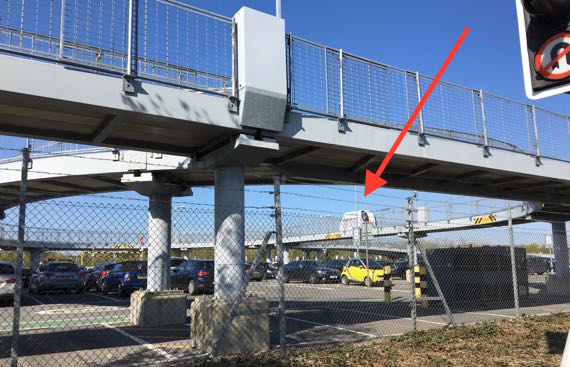
En route around Heathrow’s runways to the car rental return, we again noticed these little human transporters on a rail. I only got this one crappy picture, at a distance. These self-driving units are called pods, and the service is aimed at business travelers, linking a special parking lot with Terminal 5. It opened in 2011.
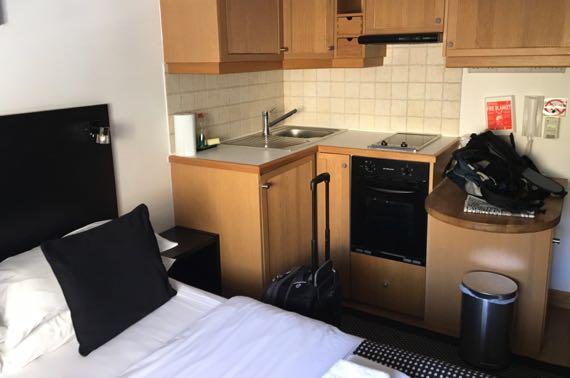
Our London home is an Ikea special. The folding chairs are actually from Ikea. If you have long arms, you can almost make coffee from the bed. We have a window with a park view and wifi; life is good.
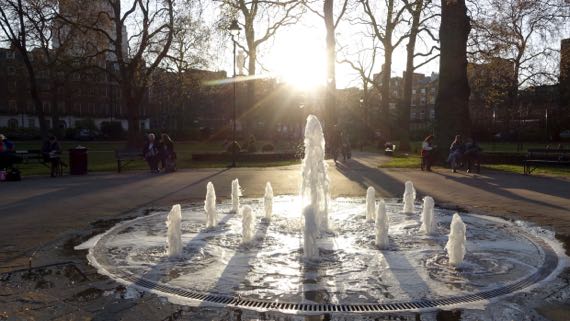
We took off for the Thames and points en route. We thought we might take the train back, but hoofed it the whole evening. Here’s a fountain in a nearby park (not our window-park). We saw several groups sitting on the grass enjoying an early meal/snack.
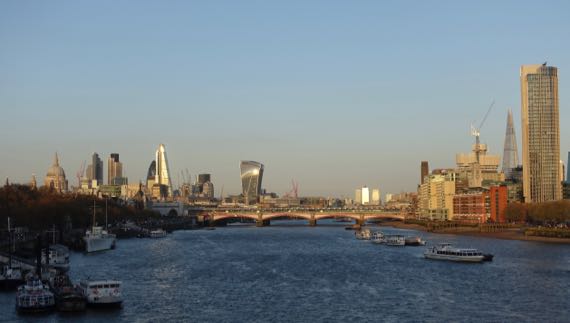
We saw the Thames in the last of the day’s light. And heard Big Ben chime at 8pm.
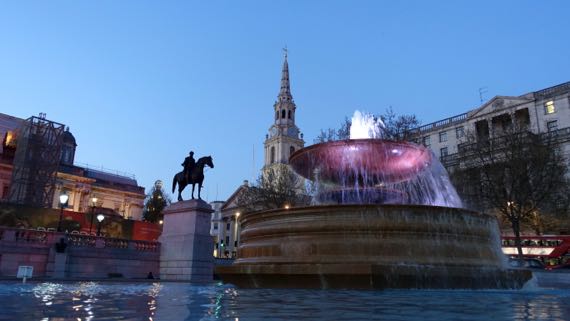
Turning north, we entered Trafalgar Square. Fountains. Spires. Blocky buildings. Man-on-horse statues.
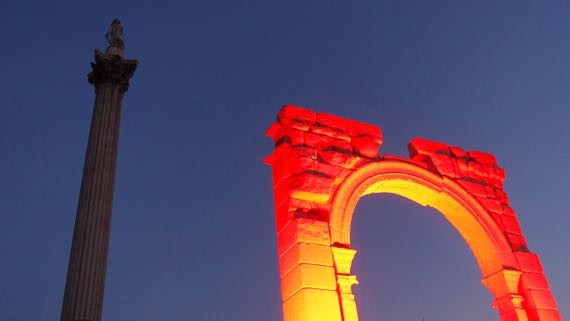
And…Admiral Nelson towering over a red glowing Roman arch. Art. The Guardian says it’s a Carrara marble replica of Palmyra’s Arch of Triumph, recently destroyed by Daesh/Isis. It is here for three days and gorgeously lit.
Posted at 10:22 PM |
Comments Off on Siren-sister
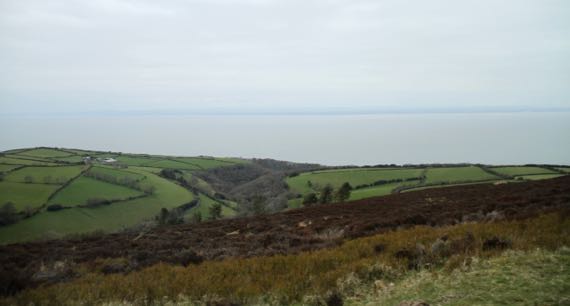
Fog on the moor this morning. Love the visual contrasts of, from front to back, the uncultivated moor, the quilt of fields separated by hedges, the sea, the Wales coast, and the muted sky.
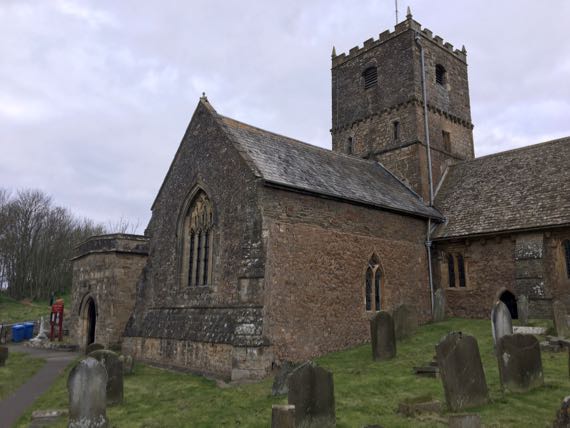

Quick stop in Clevedon to see several places used as the town in “Broadchurch”—including this church, St Andrews in real life. This is a living church, as it were, with a gravedigger (man and machine) busy opening a new spot and prayer books shelved by the door.

Then, farther up the coast, we turned west to cross this Big Bridge, the pleasure for which we paid the princely sum of £6.60. Of course, leaving Wales is no charge…just a one-way fee collection plan…perhaps to encourage the English to leave but not to visit?
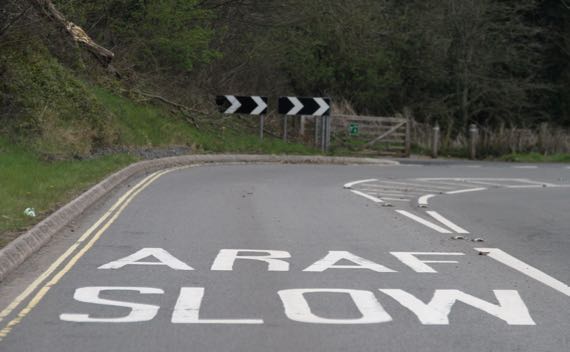
Welsh lesson: ARAF means slow. Sometimes they’re in the other order. (I was going to make the title of this post “post wan,” which translates as “weak bridge,” a not uncommon phrasing on a sign on a country lane.)
And, now for Tintern’s church ruins. It is mostly commonly referred to as an abbey, and it was, but most photos are, frankly, not of the monastery, but of the church.
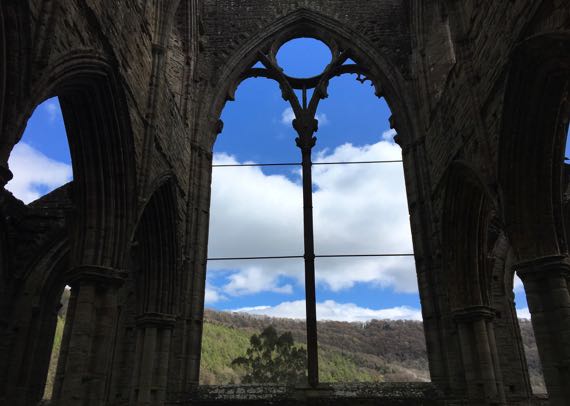
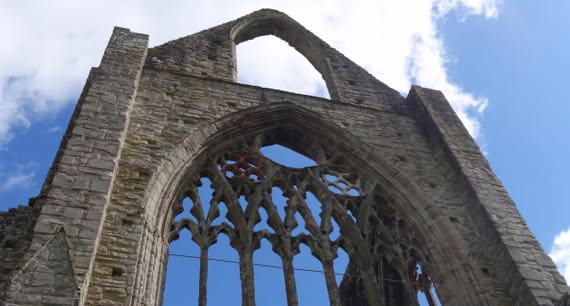
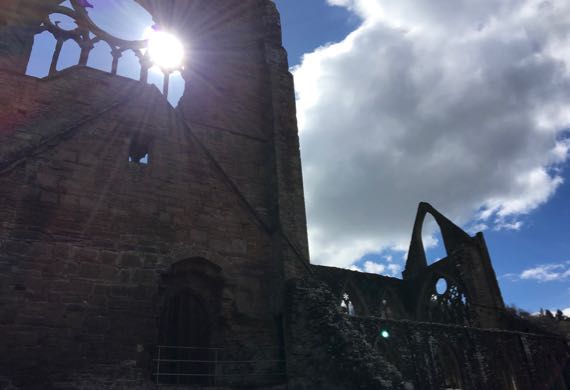
First, the window opening above the east, altar end of the main hall. Second, the newly restored upper window area of the opposite, west (door) end. North transept, wall of high window openings extending to west end.
The light was transcendent.
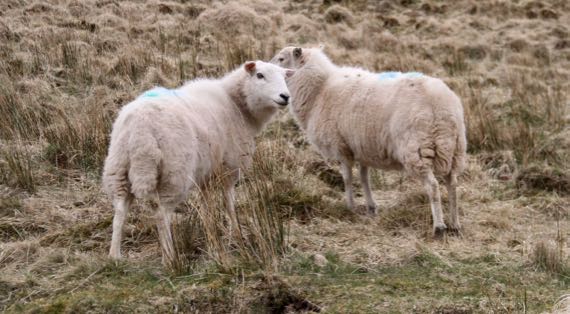
Today is our first visit to Wales. Signs are different—bilingual. Sheep seem the same to us non-shepherds.

And this is the National Assembly building in the dock-front area of Cardiff. Shipping is not what it used to be and this zone is being repurposed to draw locals and visitors. While somewhat commercialized, there are also stunning modern and historic buildings. And glittering water, wheeling gulls, and, for a while just for us(!), late-afternoon warm-toned sunshine.
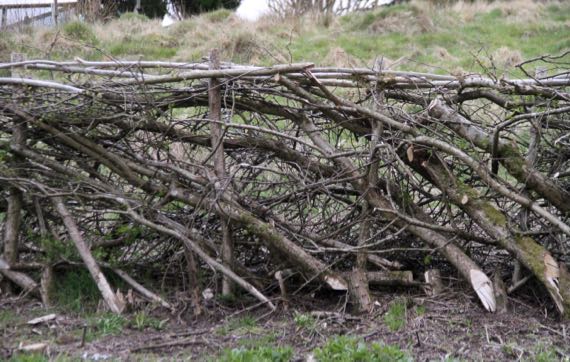
Here’s a closeup of a living fence, mentioned yesterday. This one has the uprights just bent to the side, rather than all the way horizontal. After growing, it has the same effect of making a latticework impenetrable to sheep, cattle, and people. Small birds, rodents, and other small creatures may well make their home here….
Posted at 10:22 PM |
1 Comment »
We had several sightings of “fog smoke” signs (no photo) along the highway. Since we experienced bright sunshine, we remain unclear about how to recognize this condition. That was the first two-word phrase of the day.
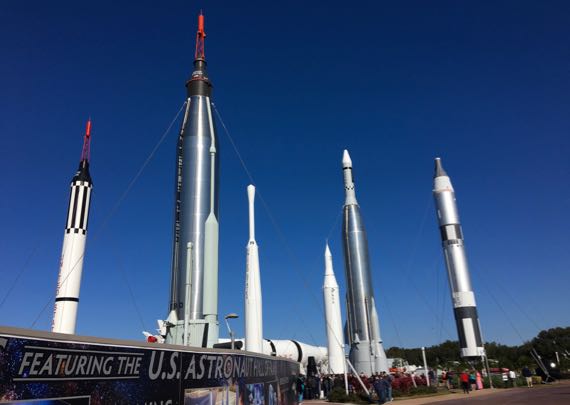
Our first stop…this “Rocket Garden,” or so the Kennedy Space Center Visitor Complex signs described it. I guess they’re all real, and not copies. They kindly broadcast a live “tour” of the garden periodically. We caught part of two of them, both the same voice, one disconcertingly similar to Rachel Maddow’s.
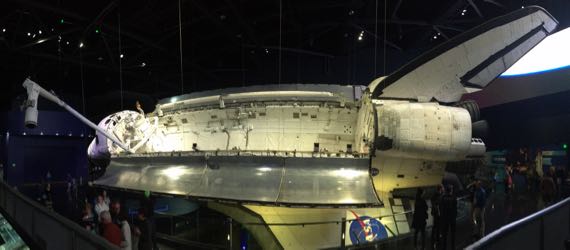
This is the Space Shuttle Atlantis, somewhat distorted by the pano process. It is huge, and I was happy that we could see it for real—not a copy, not a mockup. The two words? The business end (terminus?) of the arm (made in Canada and liberally decorated with Canada/maple leaf logos)…is the end effector. That cylindrical thing you see to the far left is the end effector.
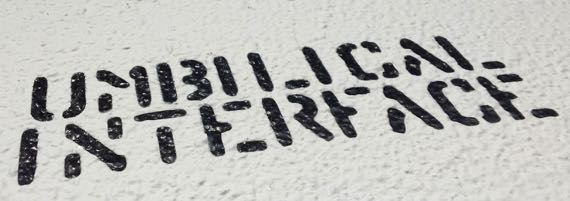
This stencil is from a lower flank of a space shuttle fuel tank. Self explanatory (another two-word phrase, teeeheee).
Posted at 10:01 PM |
Comments Off on Two-word phrases

Easiest closeup flower photo of the day: this hyacinth was in an almost eye-level planting by the sidewalk. A bit frost-nipped….
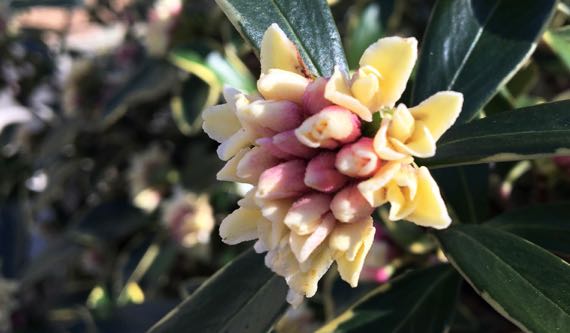
I smelled a combination of honey and orange…looked for the flower and found this unassuming specimen. Sorry I can’t post the lovely scent.

For no apparent reason, I include this knobby tire/wheel, aka tire with toenails, as I once heard it put.
Happy spring, or almost-spring.
Posted at 11:05 PM |
Comments Off on Season-noted
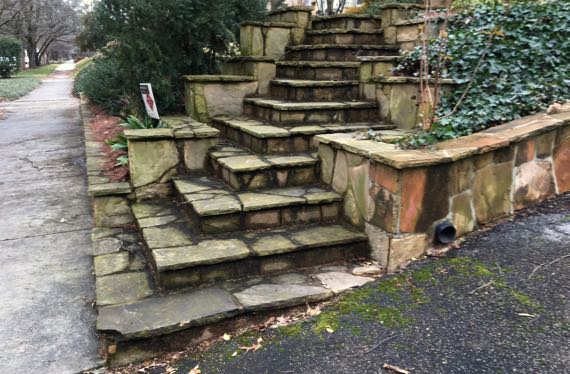

I thought about steps today, about architectural solutions to elevation change between the sidewalk and a house. Nothing monumental in that…just functional problem-solving.

This is simple, however—footprints in mud. People (sneakers) and dog.
Are Fitb_t steps (possibly simply footfalls?) simpler or more complex?
Posted at 10:16 PM |
1 Comment »
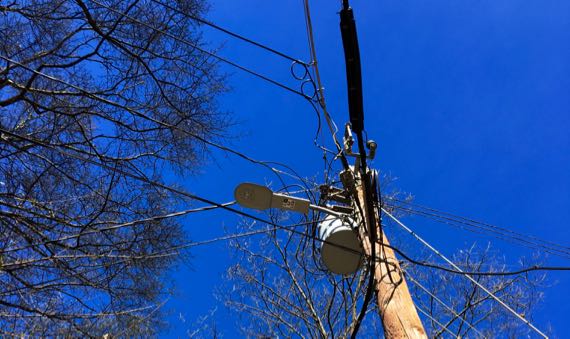
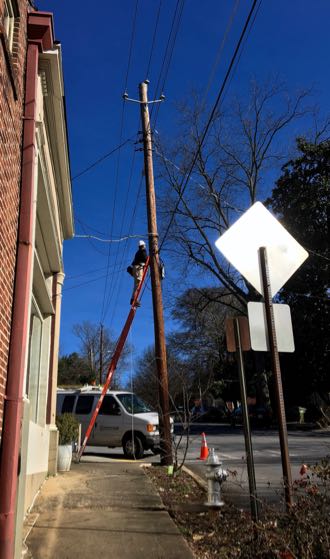
Beautiful sunny day, and I took advantage of it for an early afternoon ramble. I found a power-pole festooned with lines and a light and maybe that’s a transformer, too. That’s not the simple one to three lines passing straight by that I remember from The Old Days.
Then, around the corner, I found another pole, with fewer accessories on top, and a Man on a Ladder—not a mechanized ladder, just the regular painter-carpenter kind—checking out the lowest level of technologies. I think his work is related to the coming fiber-delivered communication options we keep hearing about (foot-tapping impatience…).
Posted at 6:40 PM |
Comments Off on News of the heights
























































